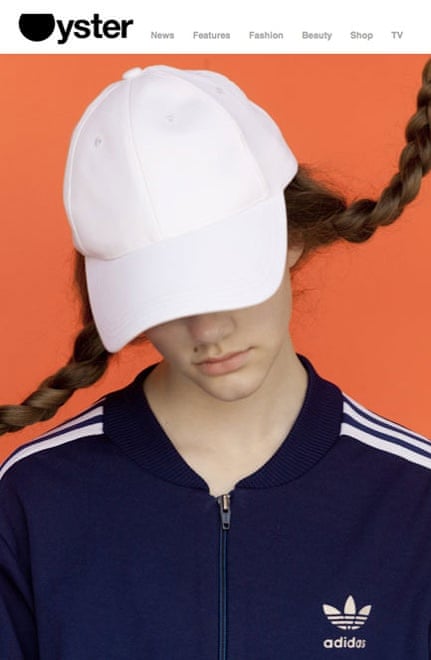Lad luxe: the fetishisation of the working class in fashion is the height of snobbery
Lads. Eshays. You know them when you see them. Like Britain’s chavs, the Australian youth subculture is widely regarded with disdain. Unless you work in fashion. There, you might still loathe their alleged past times of drug use or spray painting, but you might have also referenced them in a magazine shoot recently. Independent fashion publications are making lad style “cool” and in doing so, they’re reducing disadvantage to a trend.
The word “lad” serves as a class-based slur directed towards white underclass youths in Sydney, where the subculture is strongest. Seen to originate from the city’s west and south west (regions with high rates of poverty), the group are portrayed as a violent, feral blight, spreading like vermin into the suburbs.
As the descriptions go: they wear striped polo shirts, sports shorts, Nike TN sneakers, they carry bumbags over one shoulder, wear white caps, chain smoke and their preferred brands are Nautica, Saucony and Polo Ralph Lauren. They also use a lot of pig latin, to onfusecay hetay opscay. Their displays of conspicuous consumption, paired with an allegedly violent, sportswear silhouette, make for one attractive summer look for middle class kids seeking to antagonise their parents. And thus, lad luxe.

Photo: kissydressinau.com short formal dresses
The more lads and lasses (the female counterpart) are portrayed as “gangs that attack in numbers…the biggest scurge across Sydney,”the more contempt wider society has for them. They’re routinely caricaturised as dangerous and deeply associated with the young working class, as if the traits of amorality and a “poverty of ambition” are inherent in underprivileged groups and completely independent of cultural and economic factors. But that’s not the only result of representation that insists a lad’s fate is to either “grow out of their crew or enrol at Long Bay University.”
Nothing of value is seen to arise out of lad culture, but its image of vulgar dress codes and nihilistic disregard for authority is like a drug to the (by contrast) privileged creators and consumers of youth-focused fashion magazines such as F**king Young, Razou, Sneaky and my own publication Oyster — all of whom have produced editorial shoots featuring lads.
Undeniably working class signifiers abound in these shoots, with professional models placed (awkwardly) in urban settings and shoots given obvious titles like “western civilisation”, “eshay” and “ladz”. It’s one of the most interesting and undoubtedly problematic developments in fashion in the last few years and nobody wants to admit complicity. Including myself, until now.
The line goes that fashion is simply uninterested in issues of political correctness and in the realm of creativity, anything goes. But stylised depictions of lad culture rescind the myth that fashion is blind to class. Rather, they carry the weight of a fetishising, privledged gaze, because to caricaturise is to disparage. The message is that working class culture and style is only valuable when we say it is.
Class is a process of classification rather than just quantitative economics, after all. It’s about taste – and who gets to define it. Lad luxe (as my colleague Chris first jokingly defined it) reinforces the myth that the working class don’t have the natural refinement of the bourgeoisie, who see it as their project to translate and co-opt lad style for the discerning consumer. A sanitised trend like that can make a lot of money, while superficially assuaging the class inequalities it actually enforces.
But the local fascination with lads is only indicative of a wider trend. It may be that the western world on the whole is undergoing a collective psychosis, symptomatic of social anxiety surrounding the growing gap between the rich and poor. It could just be that fashion is a plagiarist at heart — not necessarily a bad thing, as this is often what “holding a mirror” to society means in practice. Regardless, the bottom rungs are being thought of as modern muses in the same way that the art tradition of Orientalism marked the bodies of the “other” as exotic and therefore were compelled to represent and categorise them – an act which only served to further notions of supposed inherent difference.
Lad luxe demonstrates fashion’s admirable mission to abdicate norms of sartorial acceptability, but simultaneously sets up a barrier between those who “get it” ie the irony-literate middle class, and those who are left out of the joke ie the lads, who despite being the source of inspiration, are deemed social scum. This type of stealth wealth reveals a counter-snobbery that’s as snobby as they come.
Also ReaD: http://www.kissydressinau.com/white-formal-dresses